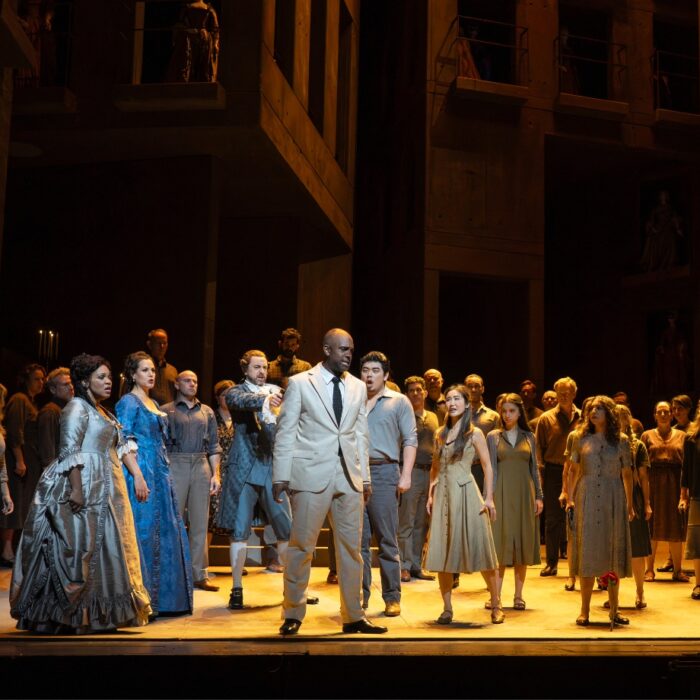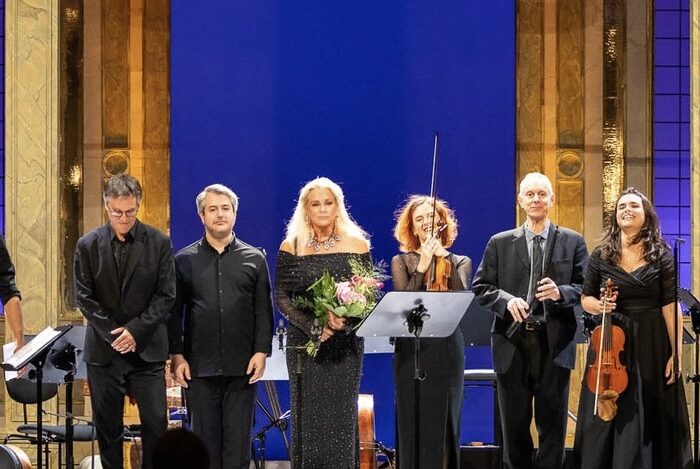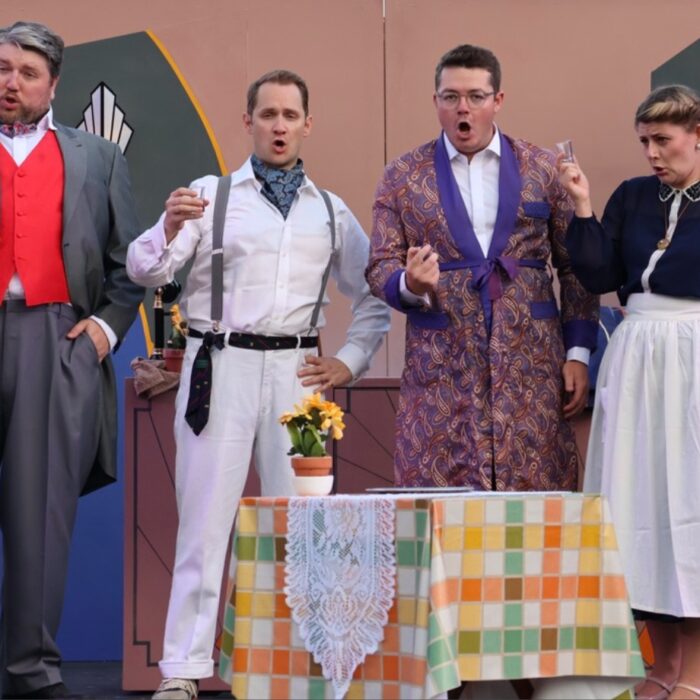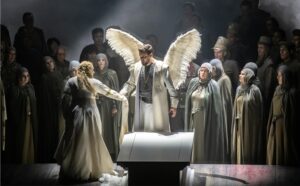
Deutsche Oper Berlin 2025-26 Review: Lohengrin
By Laura Servidei(Photos: © Marcus Lieberenz / Bettina Stöß)
The plot of “Lohengrin” is drawn from medieval German literature, a tale of chivalric values set in tenth-century Northern Germany. In this production, the stage during the prelude presents the aftermath of a battle, with corpses scattered across the scene and a comet—possibly Halley’s, which passed in 913 AD—brightening the night sky. Director Kasper Holten depicts soldiers from an indeterminate era, though their uniforms are largely consistent with World War I, while women desperately search among the dead, fearing they will find their loved ones.
The message is both important and universal, if a bit unoriginal: war is death and destruction, regardless of the era. The director ensures this powerful image lingers in the audience’s mind as the bombastic war songs begin, and the effect is indeed successful.
The opera opens with King Heinrich’s arrival in Brabant, where he has come to muster an army against the “invaders from the East.” Amidst this political turmoil, the people also petition the King to resolve a local tragedy tearing the community apart: Elsa stands accused of murdering her own brother, the young and rightful heir to the Duchy of Brabant. To settle the grave accusation, the King proclaims a trial by combat. He decrees that any knight who steps forward to champion Elsa and defend her innocence must face her accuser, Friedrich von Telramund, in a duel ordained by God.
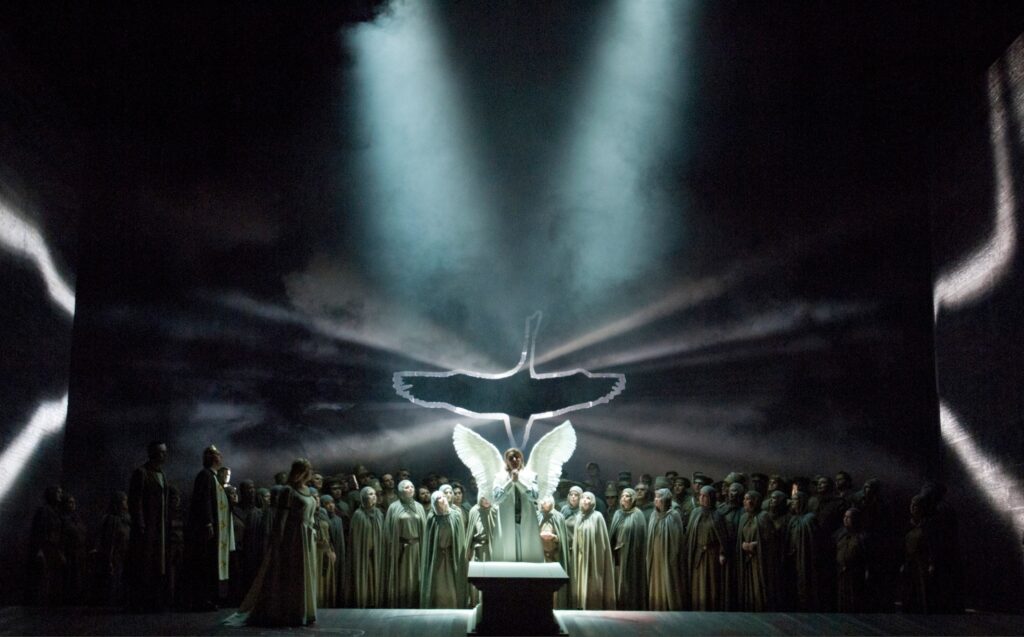
(Photos: © Marcus Lieberenz / Bettina Stöß)
This moment introduces one of Wagner’s most powerful and imaginative coups de théâtre: the arrival of a knight in a boat drawn by a swan. Director Kasper Holten forgoes a literal swan, instead using a projection of light to create the image of the bird soaring across the night sky. Lohengrin emerges as a luminous figure, adorned with gigantic swan wings. The people, including the King, are instantly mesmerized by this stranger, proclaiming him a heaven-sent hero despite knowing nothing of his identity. In this interpretation, Holten unveils a manipulative dimension to Lohengrin, suggesting he employs stagecraft and brilliant public relations to present himself—quite literally—in the best possible light.
Kasper Holten’s Vision: a Modern Parable of Power and Manipulation
Throughout this production, Holten consistently portrays Lohengrin’s motives as dubious. He appears less a semi-divine agent of the Grail and more a cunning politician. His famous request—”Never shall you ask me”—seems less a sacred vow and more a suspicious demand. Consequently, when Elsa finally forces him to tell the truth, it feels less like she has succumbed to Ortrud’s scheming and more like she has simply seen through his ruse. In the end, Lohengrin does not depart in a mystical boat but remains in Brabant, rallying the people to war with a fist held high.
A central theme of Holten’s interpretation is how easily the masses are seduced by such a figure. The allure of a “man sent by God” to solve all problems is portrayed as a potent and often disastrous temptation. The initial WWI-era battlefield setting creates a powerful, yet subtle, historical allusion to Germany’s vulnerability to a salvific leader. It is a nuanced hint for which one is grateful, as Holten wisely spares us yet another heavy-handed Nazi production. The sets and costumes by Steffen Aarfing were deliberately simple and unobtrusive; while the stage pictures were not overtly beautiful, this was a clear directorial choice to allow the figure of Lohengrin to stand alone.
Overall, the production gave ample space to Wagner’s score and the singers’ performances, while telling the story through a coherent and thought-provoking lens.
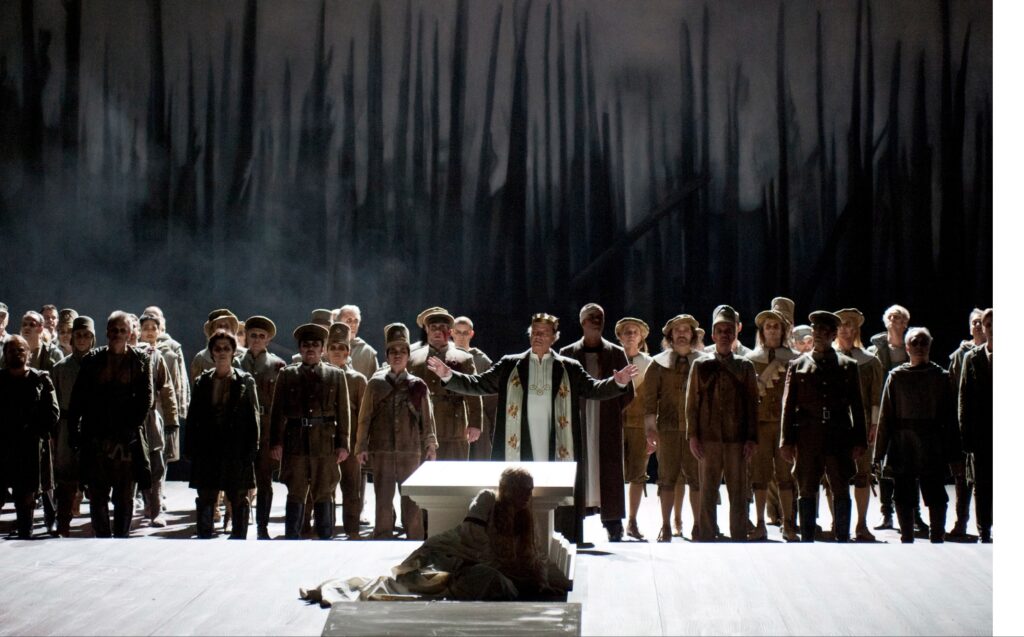
(Photos: © Marcus Lieberenz / Bettina Stöß)
The Deutsche Oper Orchestra’s Instinctive Wagner
Hearing Wagner performed in Berlin, and a few other German cities, is always a singular experience. The orchestra and chorus do not merely play the notes; they breathe and live his music. Their intimate knowledge of the score results in a reading that feels instinctive and spontaneous. The nuance they achieve stems not just from rigorous rehearsal, but from a profound, deep-seated understanding.
The brass eruption in the Prelude to Act three was as joyfully unstudied as a child’s laughter. Conversely, the chorus in Act three was profound and emotional, resonant like a prayer, while still conveying the people’s joy and reverence for Lohengrin and Elsa. Conductor Marc Albrecht led the Deutsche Oper Orchestra with a keen emphasis on detail and subtlety. While those who prefer a more bombastic Wagner might have found his approach restrained, it brilliantly served to highlight the magical and religious undercurrents of the score.
A Knight and His Doubting Bride
The roles of the two protagonists, Lohengrin and Elsa, were performed by Attilio Glaser and Flurina Stucki. Both possess light, brilliant voices with easy high notes and a solid bel canto foundation, a skill set honed in the operas of Mozart and Verdi.
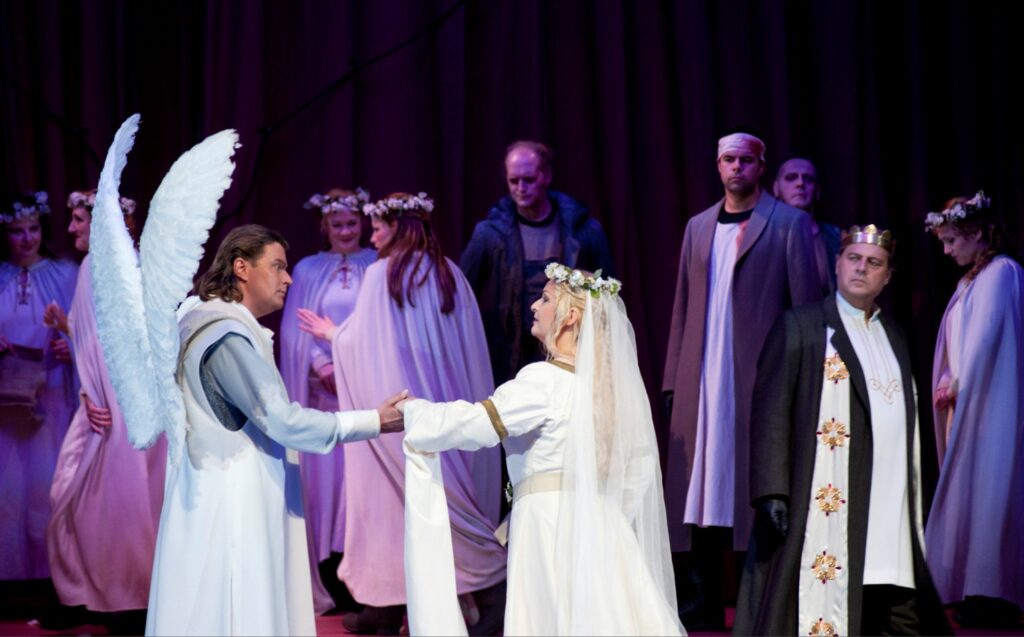
(Photos: © Marcus Lieberenz / Bettina Stöß)
Glaser delivered a deeply committed performance, his high notes secure and resonant. He was convincing in portraying the character’s darker shades. During the wedding night scene, when Elsa presses him for his origin, his sudden loss of control and threatening gesture were powerfully unsettling. His singing in this moment was remarkable, masterfully conveying restrained anger beneath a veneer of false sweetness. His rendition of “In fernem Land” felt refreshingly natural—a simple, direct telling of the story, unburdened by traditional vocal showmanship.
Stucki’s soprano, while silvery and brilliant in the upper register with effortless high notes, occasionally seemed a touch light for Elsa, particularly in the middle register. Her interpretation, however, was thoroughly engaging. She used her voice expressively to capture the character’s initial naiveté in the first act and was later highly effective in depicting Elsa’s complex mix of fear and awe toward Lohengrin.
The Architects of Doubt
Ortrud, the wife of Telramund, is the true puppet master of the drama. Believing herself entitled to rule Brabant, she orchestrates the entire conflict: she persuades her husband to falsely accuse Elsa of fratricide and later manipulates Elsa into doubting Lohengrin. Veteran soprano Nina Stemme was superb in this role, embodying the witch who worships the pagan gods with relentless outrage and a thirst for vengeance. While her highest notes showed occasional strain, they remained fully present and impactful. She commanded the stage with immense authority, her charismatic, dark-hued soprano cutting through even the densest orchestral textures and demanding attention with every phrase.
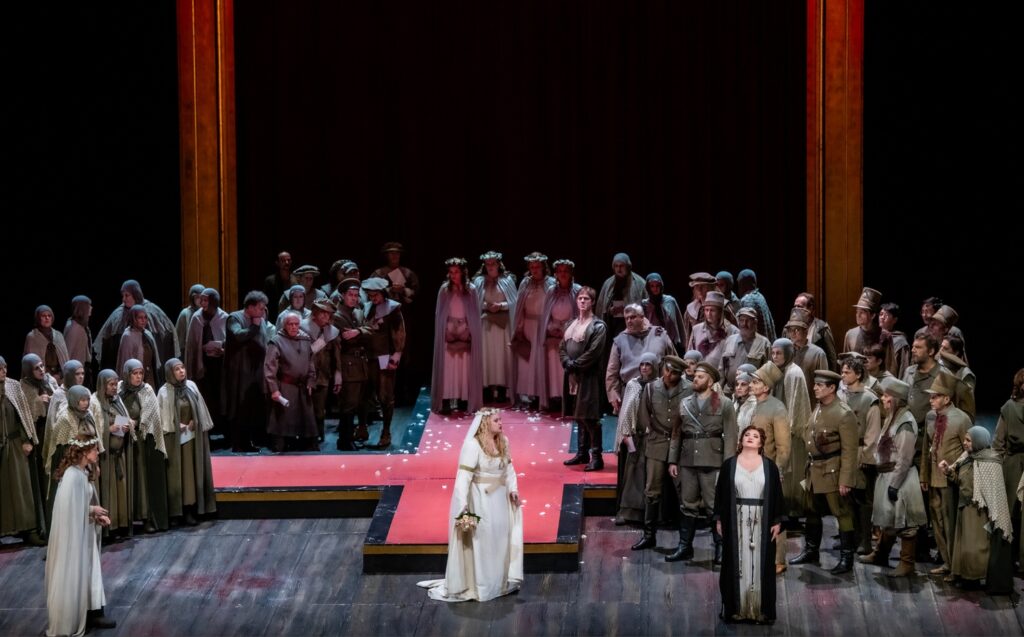
(Photos: © Marcus Lieberenz / Bettina Stöß)
Egils Silins, as Telramund, possesses a beautiful bass-baritone that, while perhaps no longer in its prime, retains its ability to shape elegant and meaningful phrases. His interpretation was remarkable for its complexity, skillfully transitioning from the wickedness of a powerful villain to the dejection of a defeated warrior, all while revealing the character’s core weakness: his utter devotion to a wife who manipulates him without scruple.
Pillars: King and Herald
Byung Gil Kim was an authoritative Heinrich der Vogler, his deep bass voice perfectly suited to the powerful, warmongering king. Dean Murphy impressed as the Herald, singing with a strong yet smooth and elegant baritone, supported by impressive breath control.

